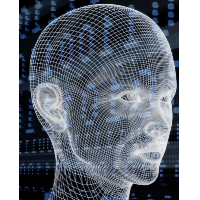Facial Recognition Software Creeps Closer to Total Accuracy
 (graphic: Electronic Frontier Foundation)
(graphic: Electronic Frontier Foundation)
Researchers are moving closer to coming up with reliable technology that allows the recognition of human faces in just seconds.
Facial recognition software has been on display in fictional form in movies for years. But the real thing has taken longer to develop, owing to the complexities of human features and the difficulty scientists have had in creating machines and computer programs that can identify and match the image of a person as well as the human eye and brain can. But recent advances in technology demonstrate that experts may yet refine facial recognition capabilities to a point of total accuracy.
A new report from the National Institute of Standards and Technology (NIST) says software applications in this field have improved by as much as 30% in just four years.
The percentage increase was found in one test group among four involving advanced algorithms that NIST examined and compared to results from a test in 2010. On the low end, another group showed only a 10% improvement in its work. At least one group managed to lower its error rate for accurately finding the correct image match from 8.9% in 2010 to 6.4% in 2013.
The testing utilized a database containing 1.6 million faces. However, the quality of the images differed from 2010 to 2013. The earlier test involved frontal mug shots collected by law enforcement agencies that complied with industry standards.
In 2013, NIST included in the database images taken for visa applications as well as nearly 150,000 webcam images “taken in poorly controlled environments that do not comply with any standard,” according to Homeland Security Newswire (HSN).
HSN also reported that the testing revealed that the technologies were better at recognizing photos of older individuals than younger ones, “suggesting that we become steadily easier to recognize using facial recognition software, and more distinguishable from our contemporaries, as we age.”
Such software is used to root out duplicates in official documents such as driver’s licenses and passports, access control, social media tagging and criminal investigations. Some cities, such as San Diego, have begun to use this technology, taking images from social media, surveillance operations and other sources and putting them in a database.
-Noel Brinkerhoff
To Learn More:
Improved Performance of Facial Recognition Software (Homeland Security Newswire)
Face Recognition Vendor Test (FRVT) (by Patrick Grother and Mei Ngan, National Institute of Standards and Technology) (pdf)
San Diego County Quietly Scanning Faces for Its Growing Surveillance Database (by Ken Broder, AllGov California)
FBI Agrees to Share Facial Recognition Searches with All Police Departments (by Noel Brinkerhoff, AllGov)
- Top Stories
- Unusual News
- Where is the Money Going?
- Controversies
- U.S. and the World
- Appointments and Resignations
- Latest News
- Musk and Trump Fire Members of Congress
- Trump Calls for Violent Street Demonstrations Against Himself
- Trump Changes Name of Republican Party
- The 2024 Election By the Numbers
- Bashar al-Assad—The Fall of a Rabid AntiSemite






Comments